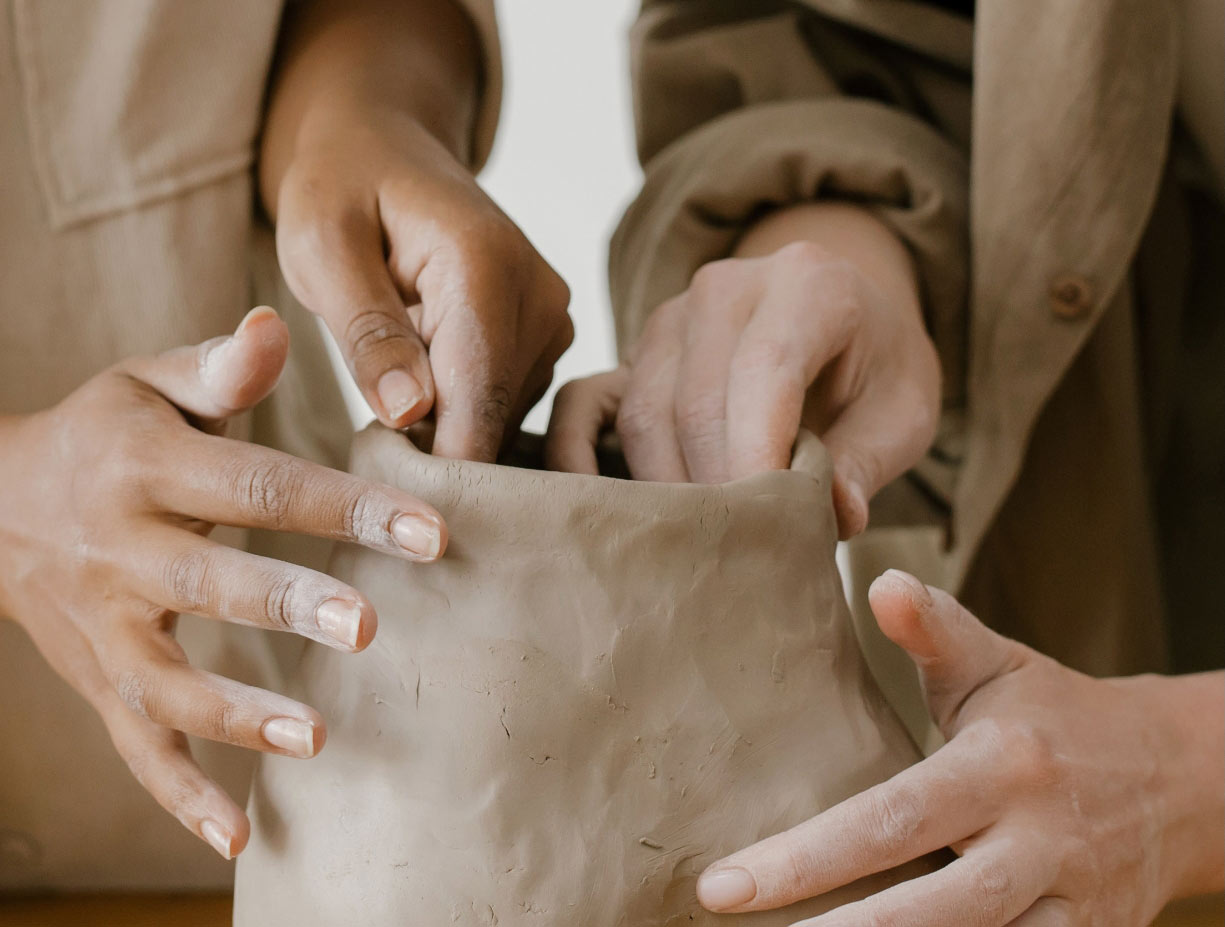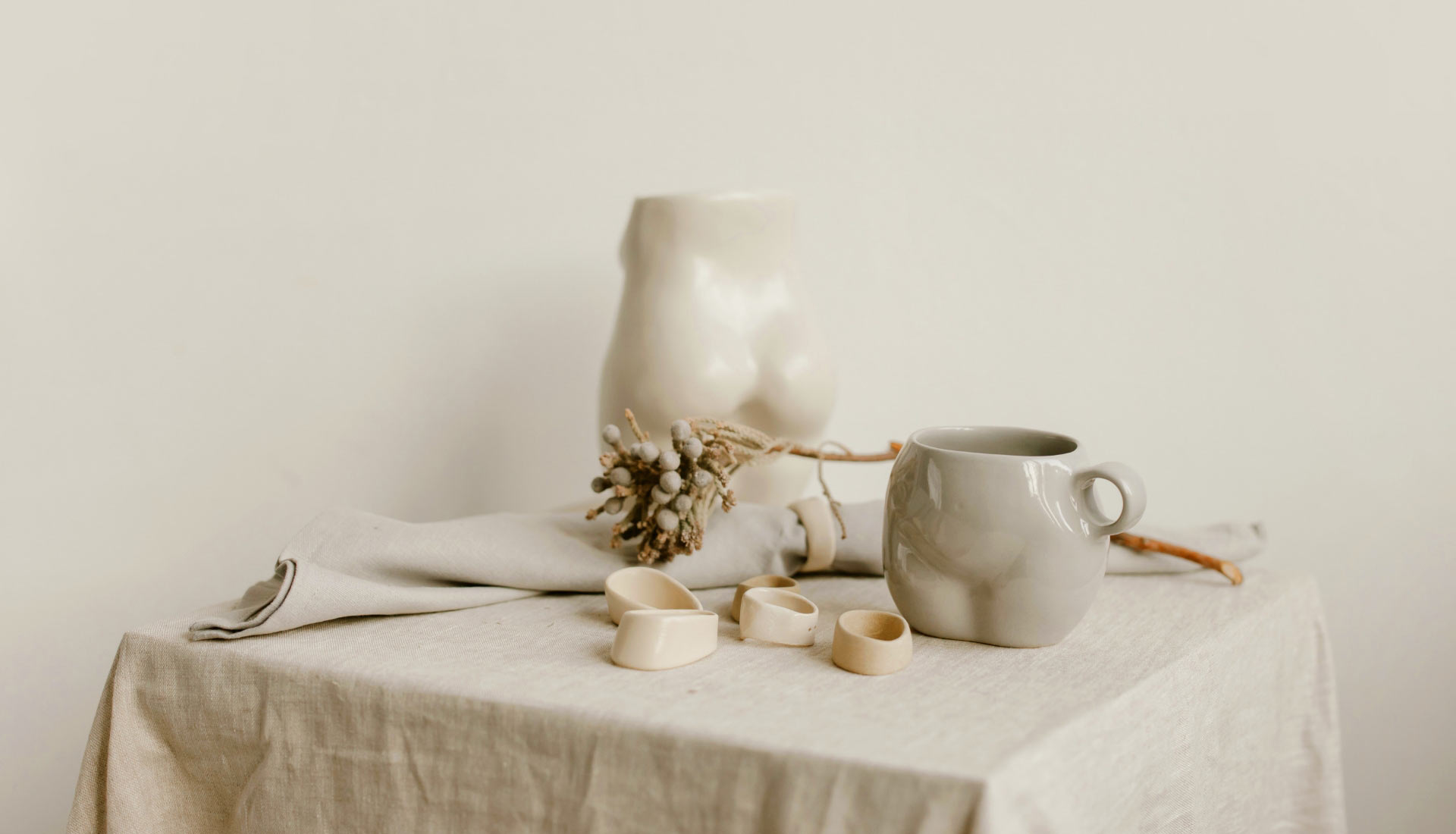Master the Art of Hand-Building Pottery
Pottery is a craft that sparks endless creativity, and hand-building techniques are some of the most approachable and fulfilling ways to work with clay. Unlike wheel throwing, hand-building relies on your hands and basic tools to shape clay into one of a kind pieces. Three essential hand-building methods every potter should try are pinch, slab, and coil. Each technique brings its own unique style and possibilities, making them ideal for both beginners and seasoned potters.
1. Pinch Pottery
Pinch pottery is one of the oldest and simplest hand-building techniques, often used for creating small bowls, cups, or decorative objects. It involves taking a ball of clay and pinching it with your fingers to form a hollow shape.
How it works:
- Begin with a small ball of clay.
- Use your thumb to press into the centre, creating a hollow.
- Gradually pinch the walls of the clay, turning and pinching to shape the object.
Benefits:
- It’s a great technique for beginners as it requires little more than your hands and basic tools.
- Pinch pots have an organic, unique quality, as no two pieces are ever the same.
- It encourages a deep connection with the material, allowing you to feel the shape and texture as you work.
2. Slab Pottery
Slab pottery involves rolling out flat sheets of clay and joining them together to form a structure. This technique is ideal for making more geometric or boxy forms, like plates, boxes, or vases.
How it works:
- Roll the clay into thin, even sheets using a rolling pin or a slab roller.
- Cut the slabs into the desired shapes (squares, rectangles, etc.).
- Join the slabs together using scoring (scratching the clay’s surface) and slip (wet clay used as glue).
- Once the shape is assembled, smooth the seams and refine the edges.
Benefits:
- Slab building offers versatility in creating larger, flat pieces.
- It’s ideal for geometric forms and more architectural pottery.
- The technique allows for detailed designs, textures, and patterns to be added before the piece is assembled.
3. Coil Pottery
Coil pottery is a technique where long, snake-like coils of clay are stacked and joined to create vessels, sculptures, or other structures. This method is commonly used to build up larger, rounder forms.
How it works:
- Roll out long, even coils of clay.
- Stack the coils on top of each other to build the desired shape.
- As you add more coils, smooth the seams with your fingers or a tool to blend the layers.
- The coils can be stacked higher or shaped into various forms for more intricate designs.
Benefits:
- Coil building allows for more freedom in shaping large and complex forms.
- It’s a forgiving technique, where you can easily adjust the shape as you go along.
- The texture of the coils can be left exposed for a rustic, handmade look or smoothed for a more refined finish.
Hand-building pottery techniques such as pinch, slab, and coil offer not only creative expression but also therapeutic benefits. These methods encourage mindfulness and relaxation, allowing you to focus on the tactile experience of shaping the clay. The repetitive motions involved in hand-building can be meditative, helping to reduce stress and promote a sense of calm. Whether you’re a beginner or an experienced potter, engaging with these techniques offers a soothing escape and a way to reconnect with yourself through the art of pottery.
3 Comments
-
-
Nour Kilani
Thank you for you feedback!
-
-
xmc.pl
You have the gift of turning abstract thoughts into something tangible, allowing the reader to grasp concepts with clarity.
Leave a Reply Cancel reply
Related articles
10 Benefits of Pottery You Need in Your Life
Pottery is more than just an art form; it’s a journey of creativity, mindfulness, and personal gro
The Pottery Process: From Clay to Masterpiece
Creating a piece of pottery is a beautiful journey that blends creativity, skill, and patience. From
Behind the Shine: A Beginner’s Guide to Pottery Glaze
In pottery, glazing transforms a simple clay creation into a stunning, finished piece. Whether it is





Polish News
You’ve taken a complex idea and distilled it into something both clear and beautiful.